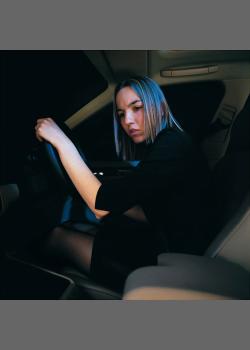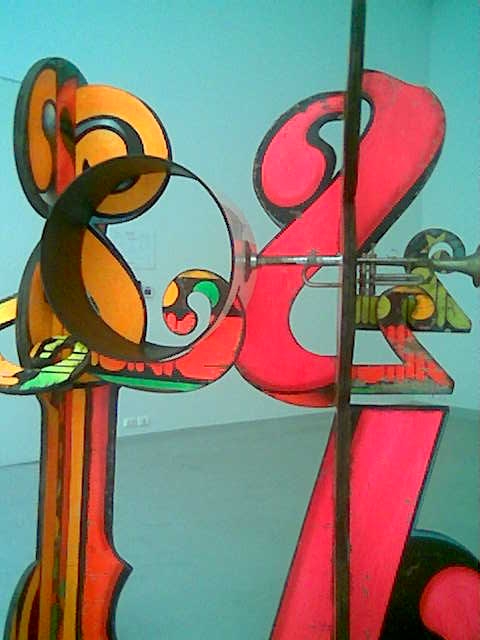My twenty-first poll is inspired by four of my most favorite films this month—EKLEIPSIS, EMERALD, NOT A MATTER OF IF BUT WHEN, and THIS CONSTRUCT CAN SERVE NO PURPOSE ANYMORE. All these films/plays have one thing in common. They use spoken words to make the audience visualize some images. So I decided to make a list of my favorite films and stage plays which use the same technique.
I like this kind of films/plays very much. I think the technique of using spoken words in films/plays usually give me a kind of ultimate pleasure. It usually makes me see two images at the same time. My physical eyes see the faces of the speakers, the nuances of feelings and emotions on their faces, or some other images which may or may not link to what the voiceovers say. At the same time, my mental eye visualizes the images described by the character in the film. Seeing both real and imagined images at the same time makes me feel something very strong, very powerful, very intense. It is not the same as reading a book or listening to a song and visualizing the events described by them, because in that case you don’t use much of your physical eyes.
The obvious example of this kind of my favorite films is INDIA SONG. In this film we see some images which link to what the voiceovers say, but the images don’t correspond totally to what the voiceovers say. In some parts of the film, we hear the voiceovers describe a road trip to an island, but we see many characters sit still or stand still in a room for a very long time. In a scene, we see only the white face of Delphine Seyrig, but we hear the voiceover say something like “She saw a violet flower.” And that is one of the greatest moments of my film watching experience—my physical eyes see only a white female face, while my mental eye sees a violet flower.
THESE FILMS/PLAYS USE SPOKEN WORDS TO MAKE THE AUDIENCE VISUALIZE SOME IMAGES. WHICH ONE DO YOU LIKE?
1.BLACKBIRD (2007, Sasithorn Panichnok, Thai play)
A part of this story concerns what happened many years ago between a young girl and a man. The audience never had a chance to see directly what happened. The audience had to visualize the whole event by listening to what the two characters told us. How vividly they described the event! While my physical eyes saw two adult characters talking in a room, my mental eye saw a young girl wander alone helplessly in a town, searching and crying for the man she loves.
2.DIRTY PICTURES (2007, John Smith, UK)
Watching this film, my physical eyes saw a hotel room, but my mental eye saw the suffering of some Palestinians.
3.DREAM WATCH FOR ANYONE WHO IS BELIEVED TO VIOLATE GOOD MORALITY (2007, Manussak Dokamai, Thailand)
In some parts of this short film, the audience see images of some buildings or landscapes being in and out of focus of a camera, while hearing Dome Sukwong talking about fruits and his dream.
4.EKLEIPSIS (1998, Tran T. Kim-Trang, USA)
Some Cambodian women described vividly their suffering under the Khmer Rouge. We never see the real events before our eyes, but their descriptions alone can make me feel very very sad. I saw this film at Conference of Birds Gallery.
5.EMERALD (2007, Apichatpong Weerasethakul, Thailand)
In this film the audience sees an empty room with particles of something floating in the air, while hearing some characters describe their lives and their dreams.
6.INDIA SONG (1975, Marguerite Duras, France)
7.LUDWIG’S COOK (1973, Hans-Juergen Syberberg, West Germany)
8.LOVE AND DIANE (2002, Jennifer Dworkin, USA)
This is a documentary about problems in a family, but the director of this film was not present when there was a big quarrel in the family. Thus, the audience never has a chance to see or hear that quarrel directly, but the audience can listen to the description of that quarrel.
9.MAGIC WATER (2001, Panu Aree, Thailand)
10.MELO (1986, Alain Resnais, France)
You can read Jonathan Rosenbaum’s review of this film here:
http://www.jonathanrosenbaum.com/?p=7690
11.MUSIC BOX (1989, Costa-Gavras, USA)
There’s a courtroom scene in this film in which a woman described her being tortured during World War II. We never see directly the torture. We must visualize the torture by ourselves. But that is more than enough. The description of the torture alone is truly unforgettable. I already felt an extreme pain just listening to it.
12.MY DINNER WITH ANDRE (1981, Louis Malle, USA)
13.NOT A MATTER OF IF BUT WHEN (2007, Julia Meltzer + David Thorne, USA)
In one scene, the performer describes his dream in which different parts of his body are fighting each other. He describes it very vividly. I saw this film at Conference of Birds Gallery.
14.ROOM OF HORROR NO.2 (2007, Wattanachai Treedecha, Thai play)
A character in this play describes vividly how he killed some people.
15.A SHORT FILM ABOUT THE INDIO NACIONAL (2006, Raya Martin, Philippines)
The opening scene of this film concerns an allegory of Philippines told by a husband to his wife.
Oggs Cruz just wrote a review on NOW SHOWING (2008, Raya Martin) in his blog:
http://oggsmoggs.blogspot.com/2008/05/now-showing-2008.html
16.TEN TINY LOVE STORIES (2001, Rodrigo Garcia, USA)
17.THIS CONSTRUCT CAN SERVE NO PURPOSE ANYMORE (2008, Sathit Sattarasart, Thailand)
18.A TOUGH CREATURE WHO BURDENS THE EARTH (2008, Paisit Panpruegsachat, Thailand)
In one scene, the protagonist describes vividly his dream for a long time, while the audience sees only a view under a bridge.
19.UNTITLED VIDEO ON LYNN STEWART AND HER CONVICTION, THE LAW AND POETRY (2006, Paul Chan, USA)
In this film, while Lynn Stewart is reciting some poems, the audience will see only some monochrome images. The monochrome images may be used to help the audience focus their minds on the words in the poems and thus they can visualize some images inspired by the poems more easily. I saw this film at Conference of Birds Gallery.
20.VAGINA MONOLOGUES (2007, Panpassa Thoobthien, Thai play)
You can cast multiple votes.
TO HEAR INAUDIBLE SOUND
While spoken words can make me see some invisible images, some silent objects can inspire me to imagine some non-existent sound. These silent objects include:
1.BIRTH OF THE SEANEMA (2004, Sasithorn Ariyavicha, Thailand, A+++++++++++++++)
This film is silent, but in some parts it gives me the hallucination that I can hear the sound of the sea coming from the film.
2.The ending of the film UNFINISHED SONG (2001, Maziar Miri, Iran, A+)
This film is not silent, but at the end of this film, we see a woman start singing, but we never really hear her song. This is a very sad and touching ending.
3.WHEN THE MOVIE LISTENS (2007, Tulapop Saenjaroen, Thailand, short film, A+)
This film lets the viewers talk to the character in the film, while the character seems to listen to us. However, I didn’t dare to make any noises while watching this film in a theater, but in my mind I could imagine what I would like to talk to the character.
4.FORGET (2007, Suchada Sirithanawuddhi, Thailand, video installation)
We see a woman talk and a woman listen in this video, but we never really hear what she says. We must imagine it by ourselves.
5.FADING (2006, Anne-Lise Boyer + Nicolas Comment, textile)
I saw it in the exhibition METISSAGES (2007). This work of art is an homage to the author Roger Vailland. It is an old radio decorated with some textile. It looks spooky. I feel as if you can hear something from the Twilight Zone from this radio. I think this piece of work should be given as a freebie with the DVD of ERASERHEAD.”
http://farm3.static.flickr.com/2391/2527640471_02838ec267_o.jpg
6.THEY RETURN TO YOU IN SONG (2001, Darren Sylvester, Australia, photo)
http://www.moragalleries.com.au/byartist.html
http://farm4.static.flickr.com/3144/2527640475_b7e9f961fa_o.jpg
7.LUK TUNG: THAI FOLK LIFE (2008, Naruemon Padsamran, sculpture)
http://farm3.static.flickr.com/2356/2527640473_14c31f4910_o.jpg



5 comments:
this one should be in the poll;
Sompot Chidgasornpongse's
ANDAMAN
2005 / sound / colour /documentary-experimental / 17 minutes
i would love to vote for it
ตอนแรกก็งงว่า No Matter of If But When คืออะไร ที่แท้ก็หนังในงาน Speculative Archive นั่นเอง ^^;;
I returned the favor, and linked back to both of your fine blogs.
I blog about cinema and art issues, atleast a quarter of the time.
I don't get to see Thai movies. My brain is smoking, trying to match a director to what you are talking about, best I can come up with now is the Coen Bros.
--NOBODY
I have to confess that I saw ANDAMAN only once and can’t remember the spoken words in this film. However, I still like this film very much. Though the film never shows us directly what happened during the tsunami, the film still inspires the audience to think or imagine about this disaster and its effects on the survivors.
--Merveillesxx
ในบรรดาหนังของ THE SPECULATIVE ARCHIVE ที่ได้ดู ชอบหนังเรื่อง NOT A MATTER OF IF BUT WHEN มากที่สุดค่ะ จริงๆแล้วก็ชอบในระดับ A+ หมดทุกเรื่อง แต่เรื่องอื่นๆมันมีความเป็นสารคดีการเมืองค่อนข้างสูง ซึ่งมันมีประโยชน์ในแง่การเมือง แต่มันไม่กระทบความรู้สึกของเรามากเท่า NOT A MATTER OF IF BUT WHEN ที่เป็นเหมือน PERFORMANCE ART
--Renegade Eye
Thank you very much for linking back to my blog.
Talking about the Coen brothers reminds me of the ending of NO COUNTRY FOR OLD MEN. I think it is very appropriate for the topic here. In the ending, Tommy Lee Jones describes his dream, but the film never shows the images from his dream. We must listen to him and visualize them by ourselves. I think it is a very thought-provoking ending, too. However, I have to confess that I didn’t pay much attention to what he said when I was watching this film, because I was still surprised or shocked by what happened before that scene. It took me a few minutes before I started paying attention to what Tommy Lee Jones said, but then the film ended.
I wrote that “In a scene, we see only the white face of Delphine Seyrig, but we hear the voiceover say something like “She saw a violet flower.” And that is one of the greatest moments of my film watching experience—my physical eyes see only a white female face, while my mental eye sees a violet flower.”
I would like to add that I didn’t realize the greatness of this scene by myself. I realized the greatness of this scene after I saw a documentary called THE COLOUR OF WORDS: INDIA SONG (1984, Jerome Beaujour + Jean Mascolo), which talks about this scene.
Post a Comment